Well, after having resolved the air conditioning crisis, I've been able to get back to the more pleasant activities for as riding Max. My usual trail riding partner had been unavailable due to some family issues but they appear to have been resolved (as best as possible) and so for the past two weeks, we've managed to get in some serious trail time.
Basically for the past two Saturdays, we've ridden up the Doc Larsen Trail, past the bathtub and then followed the fire roads in a general loop, eventually arriving back at the stable. The weather has been warm but excessively so and we've been going out in the morning. Naturally this have been more of a work-out for Max than usual due to the extended distance but he's more than capable of handling it and he's done pretty well.
The bad part is that his buddy is a Thoroughbred who is prone to getting a bit excited at times and so I have to watch Max carefully. The Thoroughbred will sometimes try to take off in a canter/gallop and Max gets excited about it. If I'm not careful, he sometimes starts to whirl so I have to be on my guard. The other bad part is going home, he likes to move fast and he's been jigging- a product of my holding him back and his wanting to trot/speed up to keep up with the Thoroughbred (unfortunately, his gait is not as fast-moving as a Thoroughbred's).
This is an area I have been working on and I recently obtained some interesting training material by Clinton Anderson, a well-known horse trainer. It seems pretty common-sense, no BS so I'm working on implementing it. The key appears to be keeping the horse's attention on you, the rider and this can be accomplished by making the horse move/circle and otherwise do work and make him focus on what you want.
The basic idea is eventually, the horse will be more interested in cooperating (i.e. not jigging or otherwise acting out) than acting up because that means he has to work harder. The key is also not to fight with the horse by holding him back- you are not going to win the muscle contest!
The book I'm using is really a compendium of articals published in "Horse and Rider" magazine:
Basically for the past two Saturdays, we've ridden up the Doc Larsen Trail, past the bathtub and then followed the fire roads in a general loop, eventually arriving back at the stable. The weather has been warm but excessively so and we've been going out in the morning. Naturally this have been more of a work-out for Max than usual due to the extended distance but he's more than capable of handling it and he's done pretty well.
The bad part is that his buddy is a Thoroughbred who is prone to getting a bit excited at times and so I have to watch Max carefully. The Thoroughbred will sometimes try to take off in a canter/gallop and Max gets excited about it. If I'm not careful, he sometimes starts to whirl so I have to be on my guard. The other bad part is going home, he likes to move fast and he's been jigging- a product of my holding him back and his wanting to trot/speed up to keep up with the Thoroughbred (unfortunately, his gait is not as fast-moving as a Thoroughbred's).
This is an area I have been working on and I recently obtained some interesting training material by Clinton Anderson, a well-known horse trainer. It seems pretty common-sense, no BS so I'm working on implementing it. The key appears to be keeping the horse's attention on you, the rider and this can be accomplished by making the horse move/circle and otherwise do work and make him focus on what you want.
The basic idea is eventually, the horse will be more interested in cooperating (i.e. not jigging or otherwise acting out) than acting up because that means he has to work harder. The key is also not to fight with the horse by holding him back- you are not going to win the muscle contest!
The book I'm using is really a compendium of articals published in "Horse and Rider" magazine:

The book can be ordered here.




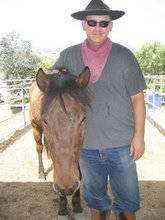
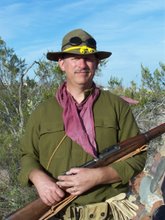
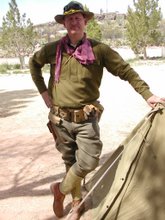
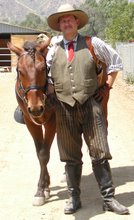
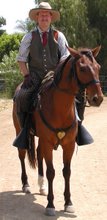

No comments:
Post a Comment